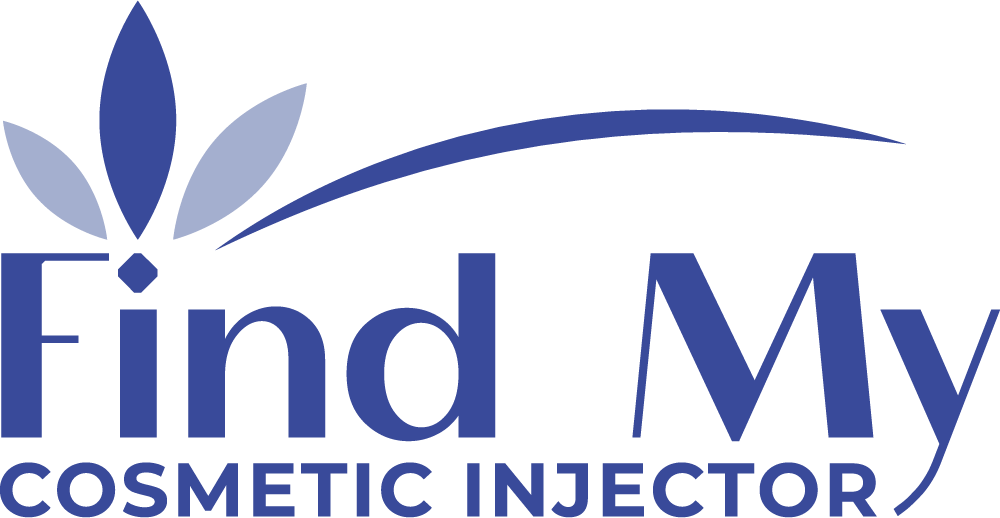
Botox – How Long to Work?
Introduction
Botox is a popular cosmetic treatment that many people use to improve the appearance of their skin. But how long does it take for Botox to work? And what can you do to make sure that it works as effectively as possible? In this article, we will explore these questions and offer some tips on how to get the most out of your Botox treatment.
Keep reading to learn more.
What is Botox and What Does it Do?
Botox is a neurotoxin that is injected into the skin in order to paralyze the muscles that cause wrinkles. It can be used to address wrinkles and fine lines on the face and neck, as well as certain medical conditions like chronic migraines.
How Long Does Botox Take to Work?
Botox generally takes about two weeks to start working. However, some people may see results as early as one week after treatment. The full effects of Botox usually kick in by week four.
The results of Botox typically last for four to six months. However, some people report that the effects can last up to a year or longer.
Side Effects of Botox
The side effects of Botox can include:
– Headaches
– Neck pain
– Muscular weakness
– Dry mouth
– Difficulty swallowing
– Nausea
– Joint pain
– Muscle pain
– Fatigue
Fortunately, this treatment’s side effects are almost always temporary and mild.
Where Can You Get Botox Injections?
Botox injections are a cosmetic treatment that can be performed by a dermatologist, plastic surgeon, or other medical professional. You can find a provider by searching online or through recommendations from friends. Once you’ve found a provider, schedule a consultation to discuss your goals for the injections.
Botox is most commonly injected into the forehead, around the eyes, and in the upper face. It can also be injected into the jawline and neck to treat wrinkles and sagging skin in these areas. Your injection site(s) will be determined by your specific goals for the treatment.
Benefits of Botox
One of the main benefits of Botox is that it is a relatively non-invasive procedure. There is no need for anesthesia or incisions. The injection itself only takes a few minutes, and there is usually no downtime afterwards. Recovery from a Botox treatment is usually very quick and easy.
Botox is also considered to be safe for most people. There are very few side effects associated with the treatment. The most common side effects are temporary and mild, and they usually subside on their own within a few days.
If you are considering getting Botox, it is important to consult with an experienced provider first. They will be able to assess your individual case and determine if Botox is right for you.
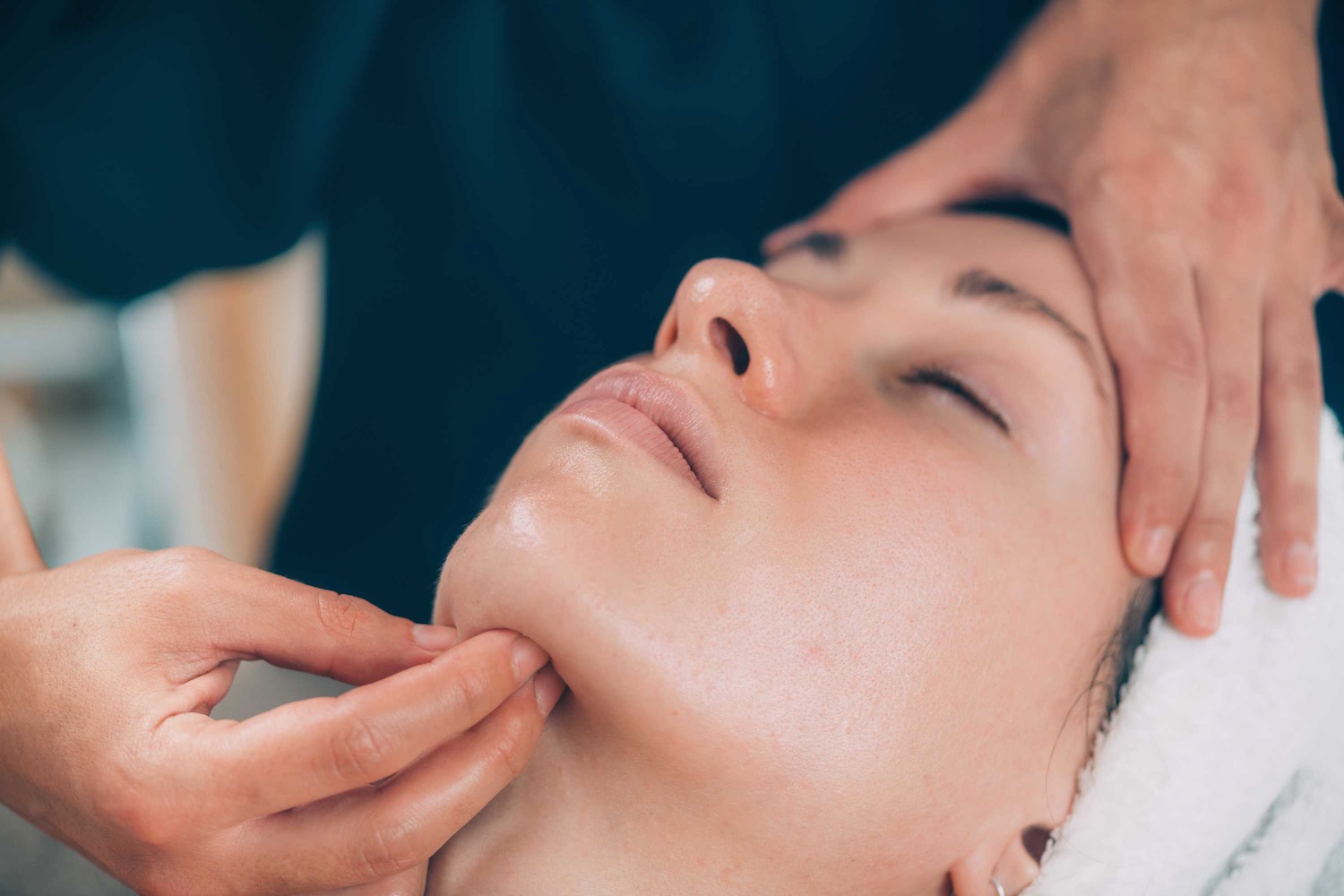
Botox on Jawline
Introduction
Botox is a popular cosmetic treatment that many people use to reduce the appearance of wrinkles. But did you know that Botox can also be used to improve the appearance of the jawline? In this article, we will discuss how Botox can be used to improve the look of the jawline and give you tips on how to get the most out of such a treatment.
Keep reading to learn more.
What is Botox and What Does it Do?
Botox is a neurotoxin that is used to help reduce the appearance of wrinkles. It is a popular treatment for crow’s feet, forehead lines, and other areas of the face. Botox works by inhibiting the signal from the nerve to the muscle, which reduces the appearance of wrinkles.
Benefits of Botox on the Jawline
Botox can help improve the appearance of the jawline by relaxing the muscles and preventing them from contracting. This can help reduce the appearance of wrinkles and make the jawline appear more defined. Additionally, Botox can help enhance the function of the jawline by improving chewing and biting.
How to Know Whether You Need Botox on Your Jawline
If you’re not sure whether you need Botox on your jawline, ask yourself the following questions:
1. Do I have visible lines on my jawline?
2. Do I feel like my jawline is tight or tense?
3. Do I have a hard time opening my mouth wide?
If you answered yes to any of the above questions, then you may benefit from getting Botox injections on your jawline. Botox can help smooth out lines and wrinkles, as well as relax the muscles in your jaw so that your mouth can open more easily.
Botox Treatment on the Jawline
A Botox treatment for the jawline is a quick, minimally invasive procedure. The provider will inject Botox into the muscles on either side of your jaw. You may experience some minor discomfort during the injection, but it will only last for a few minutes. You will be able to return to your normal activities immediately after the treatment.
How Long Do Botox Results Last?
The results of Botox for the jawline generally last between three and four months. However, the effects may vary depending on the individual. Some people may experience longer-lasting results, while others may find that their results only last for a few weeks.
There are a number of factors that can affect how long Botox lasts, including the amount of product used, the number of injections administered, and the individual’s metabolism.
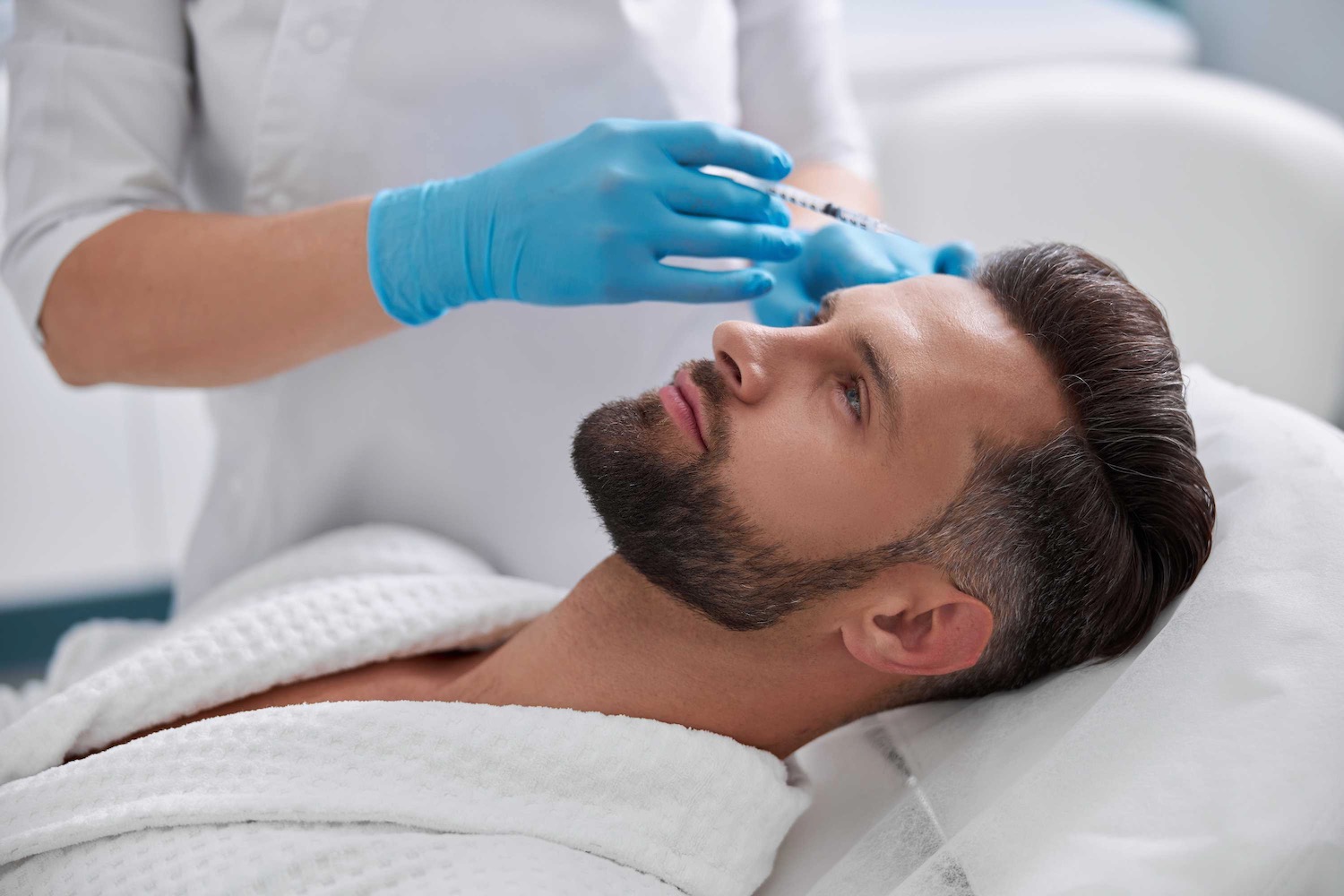
Botox Forehead Cost
Introduction
Botox is a popular cosmetic treatment that can help reduce the appearance of wrinkles. However, it can be expensive, and many people are unsure of whether or not it is worth the cost. In this article, we will examine the pros and cons of Botox forehead treatments and help you decide whether they are right for you.
Keep reading to learn more.
What is Botox and What Does it Do?
Botox is a neurotoxin that is injected into the skin to help reduce the appearance of wrinkles. It works by temporarily paralyzing the muscles that cause wrinkles.
How Much Does Botox for the Forehead Cost?
The cost of Botox for the forehead varies depending on the clinic and the amount of Botox required. Generally, Botox for the forehead costs between $300 and $600 per session. However, the cost of your specific treatment will depend on the number of units you require, the provider you visit, and your geographic location.
Benefits of Getting Botox for the Forehead
Some of the many benefits of getting Botox for the forehead include:
– Reduces the appearance of wrinkles and lines on the forehead
– Gives a more youthful appearance
– Can help to improve self-confidence
– Feels like a mini-face lift
– Can help to reduce stress and tension headaches
Is Botox Safe?
Botox is considered safe by the FDA. However, as with any medical procedure, there are risks associated with its use. These risks can include bruising, swelling, and infection. It is important to discuss any potential risks with your injector before undergoing a Botox treatment.
How Long Do the Effects of Botox Last?
The effects of Botox usually last for about three to four months. As muscle activity gradually resumes, the lines and wrinkles begin to reappear and often need to be treated again. The interval between treatments usually varies with each individual.
Who Should Not Get Botox?
Botox is not for everyone. You should not get Botox if you are pregnant or breastfeeding. You should also not get Botox if you have a neuromuscular disorder, such as myasthenia gravis. If you have any of these conditions, you may be at risk for serious side effects from Botox.
How to Find a Botox Injector
One way to find a good Botox injector is to ask your friends or family for recommendations. You can also check online review sites to see what others have had to say about a particular injector. It’s important to make sure that your injector is licensed and experienced in performing Botox injections.

Botox for Migraines
Introduction
It’s a familiar story: you’re out with friends, enjoying a night on the town, when suddenly a crippling migraine comes on. You can’t see, you can’t think, and the pain is so bad you can barely breathe. For some people, this happens once in a while; for others, it’s a regular occurrence.
But what if there was something you could do to prevent those migraines from happening in the first place? Botox injections have been shown to be an effective treatment for migraines, and they may be right for you.
Keep reading to learn more.
What are Botox Injections and How Do They Work for Migraines?
Botox injections are a type of treatment that is used to prevent migraines. More specifically, it is a type of neurotoxin that is injected into the muscles of the head and neck. It works by preventing the release of certain chemicals that are thought to cause migraines.
Who is a Good Candidate?
Botox is a great option for people who suffer from chronic migraines. It can help to prevent headaches from occurring in the first place. It is most effective when used as a preventive measure rather than as a treatment for an existing migraine.
A good candidate for Botox injections is someone who has a history of chronic migraines. Botox can help to prevent these headaches from occurring in the first place.
How Many Botox Injections Will You Need to Treat Your Migraines?
There is no one-size-fits-all answer to this question, as the number of injections you’ll need may vary depending on the severity of your migraines. However, most people require around 3-5 Botox injections to achieve their desired results.
Botox Migraine Injection Sites
Botox is injected into specific areas of the head and neck to treat migraines. The most common injection sites are:
-The forehead
-The temples
-The back of the head
-The neck
Botox blocks the release of certain chemicals that are involved in migraines. This can help to relieve pain and other symptoms associated with migraines.
Botox Migraine Side Effects
The risks and side effects of Botox injections for migraines include:
-Headache
-Nausea
-Dizziness
-Stiff neck
-Muscle weakness
-Muscle pain
-Drooping eyelids
Fortunately, as long as you visit an experienced provider, your side effects should be mild and temporary.
Before receiving Botox injections for migraines, tell your doctor about all your medical conditions, including if you:
-Have a neurological disorder
-Have had recent surgery on your face
-Have bleeding problems or take blood thinners
-Are pregnant or breastfeeding
Botox injections should only be administered by a trained medical professional.
How Much Does Botox Treatment for Migraines Cost?
Botox treatment for migraines can cost $10 to $25 per unit. A full-face treatment may require 30 to 50 units, so the total cost could range from $300 to $1,250. The cost of your treatment will depend on the provider you visit, your geographical location, and the number of units your treatment requires.
How Long Will the Results Last?
The results of a Botox injection for migraines can last anywhere from 3 to 6 months. Many patients attend follow-up treatments following that period.
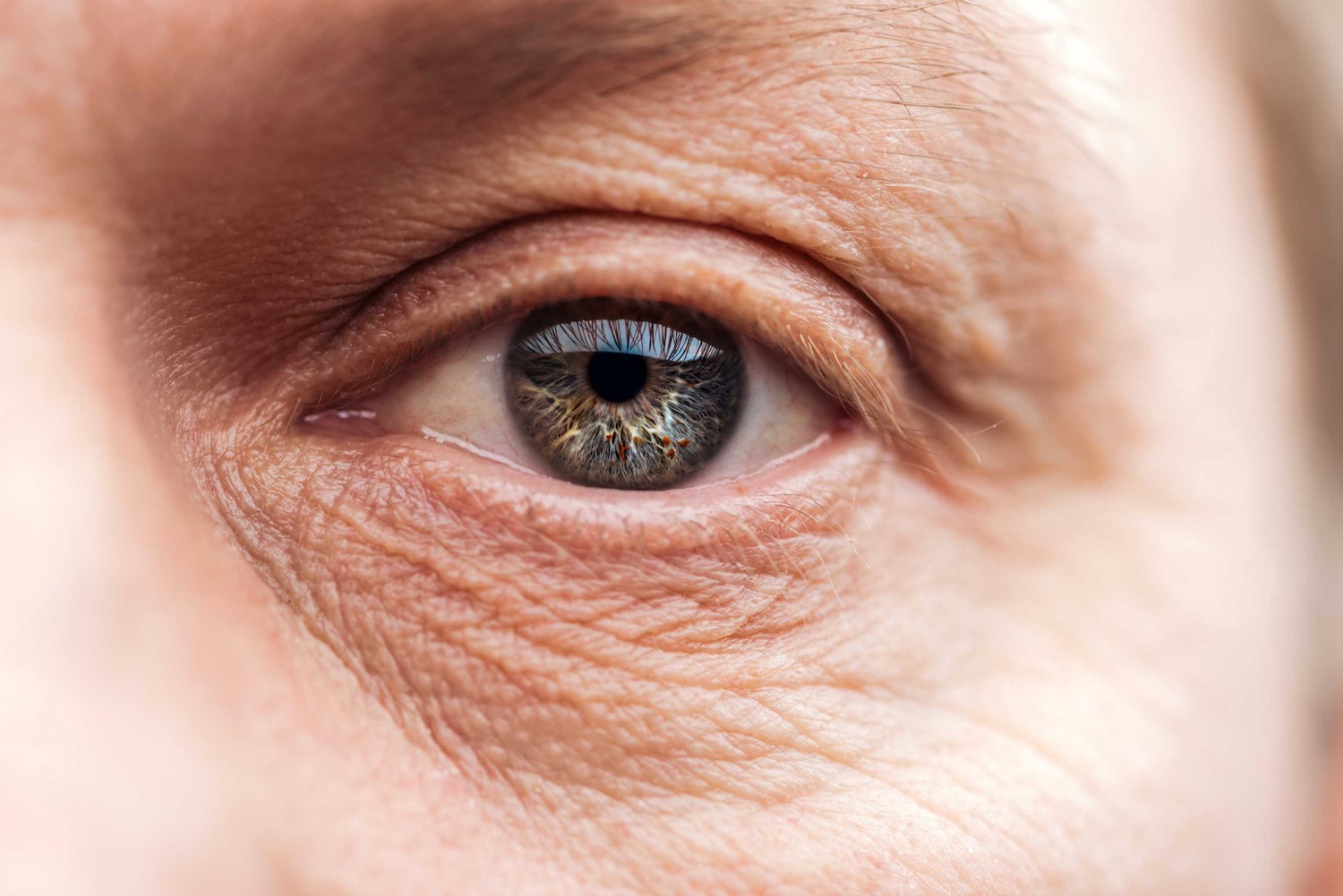
Botox for Wrinkles Under Eyes
Introduction
Botox is a popular cosmetic treatment that can be used to reduce the appearance of wrinkles. It is a neurotoxin that is injected into the skin to paralyze the muscles and prevent them from contracting. This results in a smoother appearance and reduces the visibility of wrinkles.
But can Botox be used to treat wrinkles under the eyes? Keep reading to learn more about Botox for under-eye bags and wrinkles.
Benefits of Botox
Botox is a neurotoxin that is injected into the skin to help reduce the appearance of wrinkles. Some of the various benefits of Botox include:
-Botox can help reduce the appearance of crow’s feet, laugh lines, and other wrinkles under the eyes.
-Botox is a non-surgical treatment option that requires no downtime.
-Botox is a safe and effective treatment with a stellar historical track record.
How Does Botox Work?
Botox is a neurotoxin that is used to treat wrinkles. It works by paralyzing the muscles that cause the wrinkles. The results are temporary, which is why many patients often require follow-up treatments to maintain their results.
The Botox Procedure
The procedure for Botox injections for wrinkles under eyes is very simple. The injector will numb the area with a local anesthetic and then inject the Botox into the muscles underneath the skin. The procedure usually takes only a few minutes and is very safe.
How Long Do Botox Results Last?
The results of a Botox injection typically last 3-4 months. As muscle activity gradually returns, the lines and wrinkles begin to reappear and need to be treated again. Many patients undergo follow-up treatments every 3-4 months.
Botox Side Effects
Botox is a neurotoxin that is injected into the skin to help reduce the appearance of wrinkles. While it is a safe and effective treatment for wrinkles, there are some potential side effects. These side effects can include bruising, swelling, and redness around the injection site. In rare cases, Botox can cause muscle weakness, paralysis, or difficulty breathing. If you experience any of these side effects, it is important to seek medical attention immediately.
Botox Under Eyes Cost
The cost of getting Botox for wrinkles under the eyes varies depending on the provider you visit. Typically, it costs between $200 and $800 per session. However, it is important to consult with a provider to find out how much the treatment will cost in your area.
Conclusion
If you are considering getting Botox for wrinkles under your eyes, it is important to consult a board-certified practitioner first. They will be able to assess your individual case and determine if Botox is right for you.
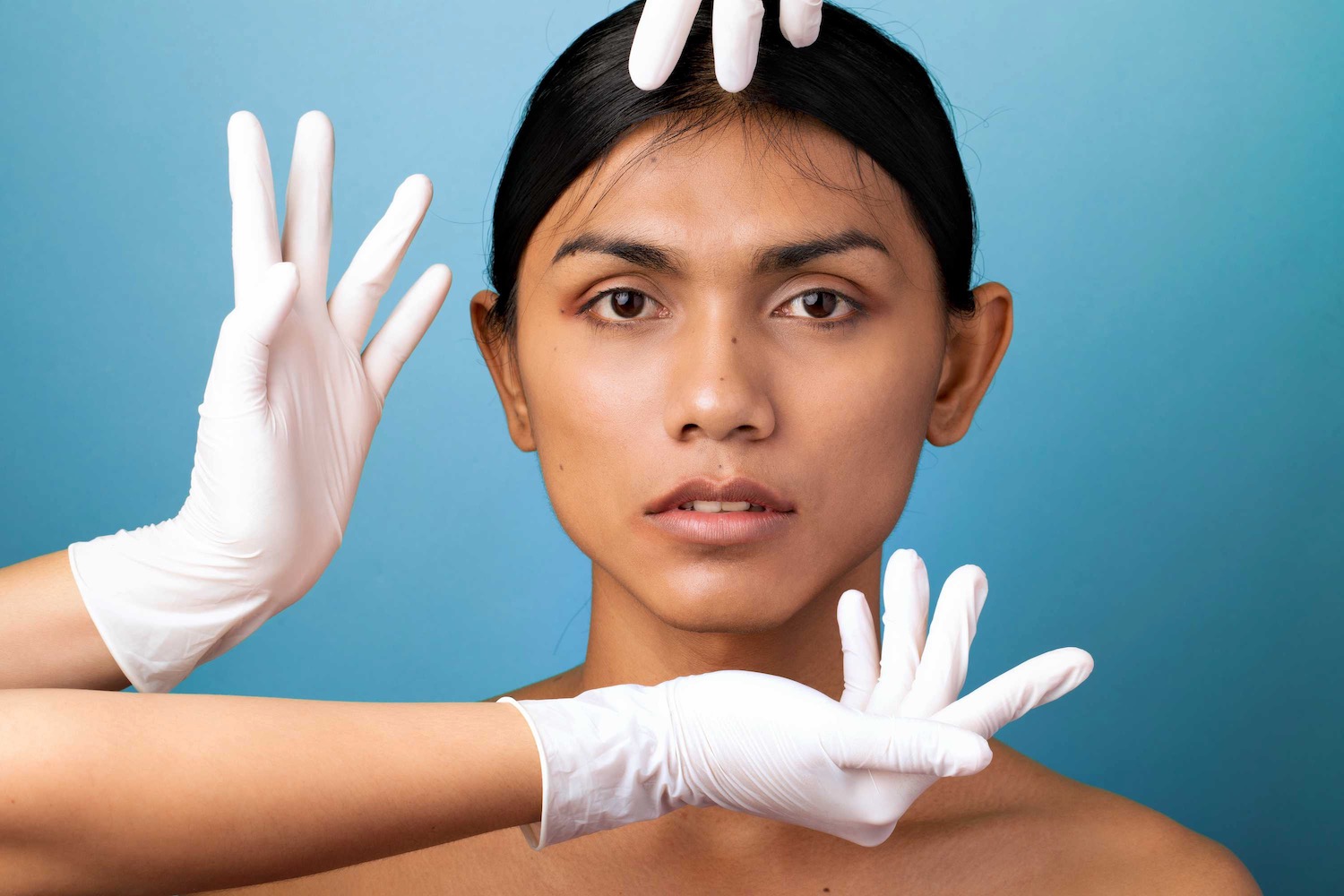
Botox Per-Unit Cost
Introduction
One of the most popular procedures people undergo to maintain their youthful appearance is Botox injections. But how much does Botox cost per unit? That depends on a number of factors, including the provider performing the procedure, the geographical location of that provider, and the amount of Botox being injected.
Keep reading to learn more.
What is Botox?
Botox is a neurotoxin produced by the bacterium clostridium botulinum. It is used in a variety of medical treatments, including those for spasticity and dystonia. It works by blocking the release of a neurotransmitter, resulting in muscle relaxation.
What Can Botox Treat?
Botox is a popular cosmetic treatment that can be used to treat a number of conditions, including:
– Wrinkles
– Crow’s feet
– Frown lines
– Neck bands
– Excessive sweating
Benefits of Botox
Botox has many benefits for both men and women. It can help reduce wrinkles and lines, giving you a more youthful appearance. Botox can also help improve your facial expression and help you look less tired. It is a safe and effective treatment that can provide you with long-lasting results.
Who is a Good Candidate for Botox?
A Botox injection is a cosmetic treatment that uses a purified form of the botulinum toxin to smooth wrinkles and improve appearance. It is most commonly used on the forehead, around the eyes, and in the mouth area. Botox is considered a safe and effective treatment for wrinkles when administered by an experienced provider.
Some people are better candidates for Botox than others. Typically, good candidates for Botox are:
-Ages 18-65
-In good overall health
-Not pregnant or breastfeeding
-Not taking blood thinners or other medications that may increase bleeding risk
-Not allergic to botulinum toxin
If you are considering Botox, be sure to consult with a qualified provider to discuss whether it is right for you.
How Much Does Botox Cost Per Unit?
Botox’s average cost can range anywhere from $10 to $20 per unit depending on the provider and their geographical location. However, some providers may offer bulk discounts for larger quantities of Botox purchased at once.
The number of units needed will depend on the specific treatment area and the desired results. For instance, treating crow’s feet generally requires 12-20 units, while treating forehead wrinkles may require 20-30 units.
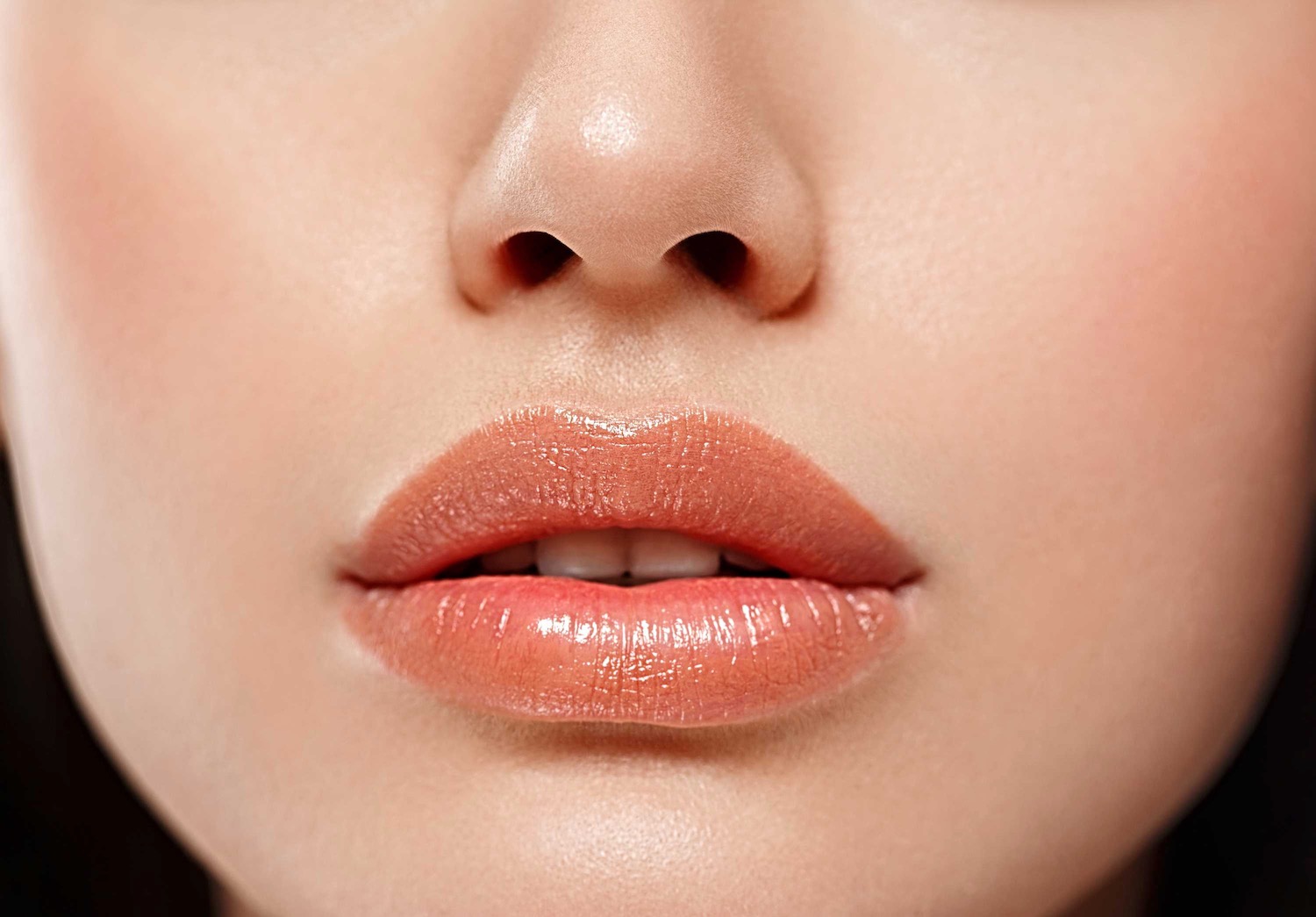
How to Plump Lips Without Botox
On many people’s faces, it’s their lips that garner the most attention from onlookers and admirers alike. It is widely thought that a person with thin lips lacks the attractiveness and sex appeal of someone with a thicker, poutier pucker. That is why many people choose to get Botox injections to make their lips look fuller.
This article will discuss different ways that you can plump your lips without getting Botox injections. First, there are temporary methods that use things like collagen or Restylane fillers, which help to give the appearance of fullness for a few months before wearing off and needing to be repeated. Second, there are more permanent methods such as lip implants, which last indefinitely but may require surgery.
Gaining Plumpness with Balms, Glosses, and Exercise
There are a number of ways to plump your lips without getting Botox injections. First, you can use a lip plumper. There are many types of lip plumpers on the market today, and they all work a little bit differently. Some work by increasing blood flow to the lips, while others work by adding collagen or other ingredients that help to plump the lips.
By using a natural lip gloss that is enriched with oils and nutrients, for example, you will keep your lips plump and feeling refreshed throughout the day. Methods like this one – although virtually risk-free – are also only temporary.
Another way to achieve temporary plumping for your pucker is to use a lip gloss that contains peppermint oil. Peppermint oil is known to cause a tingling sensation on the lips, which will temporarily make them look fuller. Just make sure not to overdo it, as too much peppermint oil can actually be harmful.
Yet another way to plump your lips without Botox or fillers is to use a collagen-infused lip gloss. This type of lip gloss will help promote collagen production in the skin, resulting in fuller-looking lips. Plus, the collagen will help keep your lips hydrated and looking healthy.
Another way to plump your lips without Botox is to use a lip liner. Lip liners can be used to make your lips look fuller and more defined. They can also be used to create a lip shape that you like better. You can use lip liner by itself, or apply it before you apply your favorite lipstick.
There are also some simple exercises that you can do at home without having to spend any money at all. One of these exercises is called the “fish lips” exercise. To do this, you simply purse your lips together and then use your fingers to open them up like a fish’s mouth. Do this 10 times per day and you should start to see results in a few weeks.
Another exercise is called the bee’s sting. To do this, suck your lower lip into your mouth and hold it there for 5 seconds before releasing. Repeat this 10 times per day and you should see an improvement in the fullness of your lips over time.
These exercises are not as effective as getting injections or surgery, but they are much cheaper and have no risks associated with them.
Other Solutions
For anyone who is serious about plumping up their lips without looking like they’ve had Botox injections, there are many long-lasting ways that will likely give you the results that you want.
The first solution involves using collagen, or Restylane, fillers that are injected into the lip area. These work by adding volume in that area, making the lips appear to be fuller. When these procedures wear off, after a few months you would have to get the procedure repeated to maintain the look.
Dermal fillers are perfect for those who are not interested in surgery. Dermal fillers are products that are injected into the skin in order to fill in wrinkles and lines. They can also be used to plump up the lips. Dermal fillers come in a variety of different formulas, so it’s important to find one that is right for you.
You could also consider getting laser liposuction. This procedure uses a laser to destroy the fat cells in the lips, resulting in a more contoured appearance. However, it is important to note that laser liposuction is a surgical procedure and comes with some risks.
Another, more-permanent solution is to get lip implants placed. Lip implants are exactly what they sound like: a surgical method that involves the implantation of a prosthetic lip enhancer so as to plump your lips. While some people are able to have their lip implants removed after they are no longer needed, others may find that this is not possible.
These implants are usually made from silicone or other materials that will not cause a reaction in your body. The main downside to this is that it is a surgical procedure and it is therefore costly and may have some risks associated with it.
These implants can be inserted in one of two different locations in the cheek – either in front of the ears or higher up near the temples. Cheek implants can give your cheeks a more defined shape, and can also help to plump your lips.
Seeking More Long-Lasting Results
In conclusion, there are a number of ways that you can plump your lips without having to get Botox injections. But no matter what method you choose, it’s important to remember also that these methods are only temporary fixes. If you want long-lasting results, you may want to consider getting Botox injections.
The best way to find out which one is right for you is to talk to your doctor or a professional who can help you make the decision. If you are looking for a more permanent solution, then getting surgery may be the best option for you.
However, if you are looking for something that is temporary and does not require any needles or surgery, then using fillers may be the best choice. And simple exercises at home may help to increase the fullness of your lips over time.
Whatever method you choose to achieve that envied, pouty pucker, just be sure to do your research and talk to a professional beforehand to make certain that you are making the best decision for your needs.
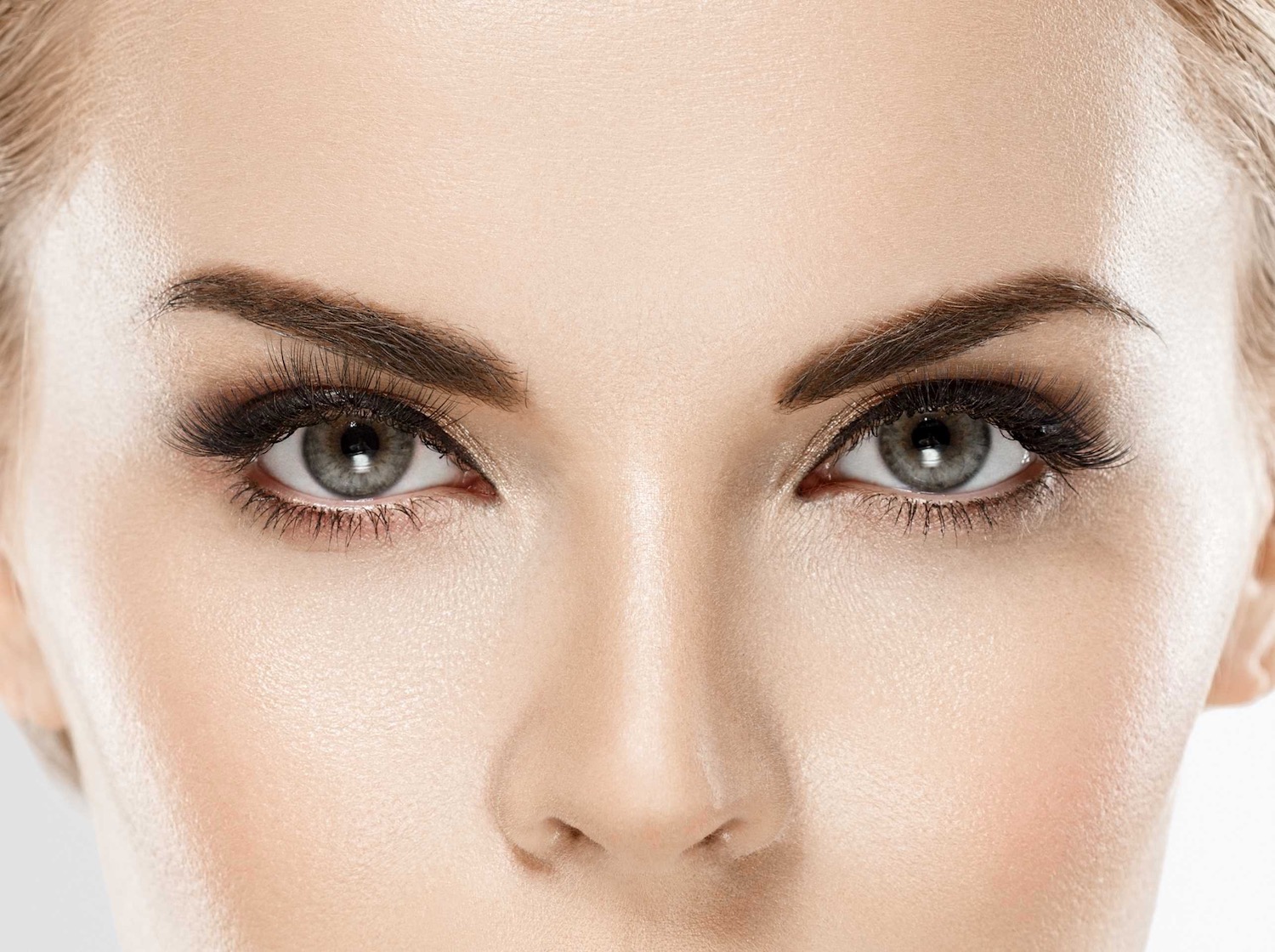
How to Lift Eyebrows with Botox
If you have thin, sagging eyebrows due to age or over-plucking, Botox (botulinum toxin) can help you get the brows back in shape. The procedure is quick and painless and will last a long time. You will need some touch-ups every 3-4 months, however, as the effects of the injections wear off over time.
This article will explain how to lift eyebrows with Botox, which is a nonsurgical cosmetic procedure that can be used to reduce the appearance of fine lines and wrinkles, such as crow’s feet around the eyes, horizontal forehead creases, and vertical frown lines between the brows.
During this treatment, a mixture of Botox is injected directly into muscles of the face to weaken them and reduce contraction over time. This will keep these muscles relaxed and therefore prevent face wrinkles from occurring or worsening, depending on your age and level of sun exposure.
It’s possible for you to get Botox in order to soften deep furrowing across the forehead or crow’s feet near your eyes; however, if you desire smoother skin, it is best to consult with your doctor about having Botox injections.
What to Expect with Botox Treatments
The effects of Botox can last up to 4-5 months, depending on the individual’s metabolism and how active their facial muscles are. As soon as your body starts producing more collagen, you can begin noticing improvements in your skin tone and texture.
When administered correctly by a trained professional, the risks involved with receiving Botox injections are minimal. However it should be noted that a few people have had allergic reactions to certain formulations of the product. If this does happen, you will have to seek out different options for treatment.
Although this treatment is most frequently used to minimize wrinkles and lines in many areas of the face, you will experience a faster recovery time if you only have injections in the forehead, crows feet around your eyes, and horizontal creases across your forehead.
If you would like to reduce expression lines on your neck or fine lines on your upper lip, then it’s recommended that you visit the dermatologist for a consultation – they may offer other treatments that can help with these issues.
On average, a set of Botox procedures costs between $350 and $750 per treatment area. The average fee for treating areas such as the crow’s feet near the eyes is lower than that of treating larger surfaces like the forehead because less product needs to be administered. The price of the injections may vary depending on your geographical location and provider.
Typically, you will start to notice changes within 3-5 days after treatment. However, some patients don’t feel comfortable with their appearance until 3-4 weeks after receiving treatments when they get used to the new way that they look. It’s possible for you to get Botox injected into your face anywhere between 6 months to one year apart from each other. This is considered safe because it allows your body enough time for collagen remodeling without disrupting any treatments.
If you have any concerns about getting a set of injections every 4-6 months, make sure you talk with a professional in order to find out if this is a suitable treatment option.
Timing is Everything with Repeat Treatments
It’s highly recommended that you wait at least one month to get botox injected into your face after surgery, as this allows your body to heal completely. Some physicians may offer the treatment sooner than this time period if it has been deemed safe by other reasons.
However, it’s vital that you never receive Botox injections if you recently had cosmetic or reconstructive surgery on any part of your face due to an increased risk of serious side effects. Also, it will take longer for the muscles to relax and therefore require more product to achieve desired results – which means a higher cost for the procedure. It’s best if you speak with a specialist about your individual situation.
The most common side effects associated with Botox injections are minor and generally dissipate within a few days. You may experience some temporary bruising, redness, or swelling at the injection site, but these typically resolve on their own. Rarely, you may experience more severe side effects such as difficulty breathing, chest pain, and drooping eyelids. If you experience any of these symptoms, make sure to seek medical attention immediately.
There are some people who should avoid getting Botox injections altogether. If you are pregnant or breastfeeding, then you should not receive any Botox injections as this can be fatal to your baby. You should also not get Botox injections if you are allergic to botulinum toxin, have an infection at the planned injection site, or have myasthenia gravis.
Reaping the Benefits of Botox
There are many benefits associated with receiving a set of Botox injections. By paralyzing target muscles, it can help minimize wrinkles and fine lines for up to four months depending on the area being treated. Not only does it help reduce wrinkling but it can also improve your appearance by softening certain facial features that may appear irregular due to tension in your muscles. Some people say that they feel more confident after getting Botox injected into their face and this also increases their self esteem.
Most people consider Botox injections to be a very safe procedure, but you must keep in mind that Botox is not a permanent solution; results will fade over time. Typically, results will last for three to six months, but this varies depending on the area treated. You may need to repeat treatments every three to six months in order to keep wrinkles and fine lines minimized.
Unfortunately, Botox is not covered by medical insurance. However, if you have a flexible spending account, you may be able to use that money towards the cost of your treatments. Additionally, some healthcare providers offer financing plans which can help make this procedure more affordable for you without having to pay upfront.
This type of financing is typically interest free so it’s an excellent option if you do not have the financial resources available right away. It’s best to speak with your healthcare provider about what options are available for payment so that you can find what works best for your individual needs and budget constraints.
You can receive Botox from a very young age. In fact, many teens have been getting this procedure done for years, but it is more commonly performed on adults who want to minimize fine lines and wrinkles. If you are a parent who would like your children to get Botox treatments, then consult with your child’s pediatrician before making any decisions. Keep in mind that most insurance companies will not cover the cost of Botox on your child if they are still growing as their facial features may change over time.
It is extremely important that you meet with a qualified healthcare provider before receiving any Botox injections from them. They should be able to assess your individual needs and discuss the different treatment options that are available to you. This consultation is an excellent opportunity for you to ask any questions that you may have about the procedure. Remember, it’s important to be well-informed before making any decisions about your health.
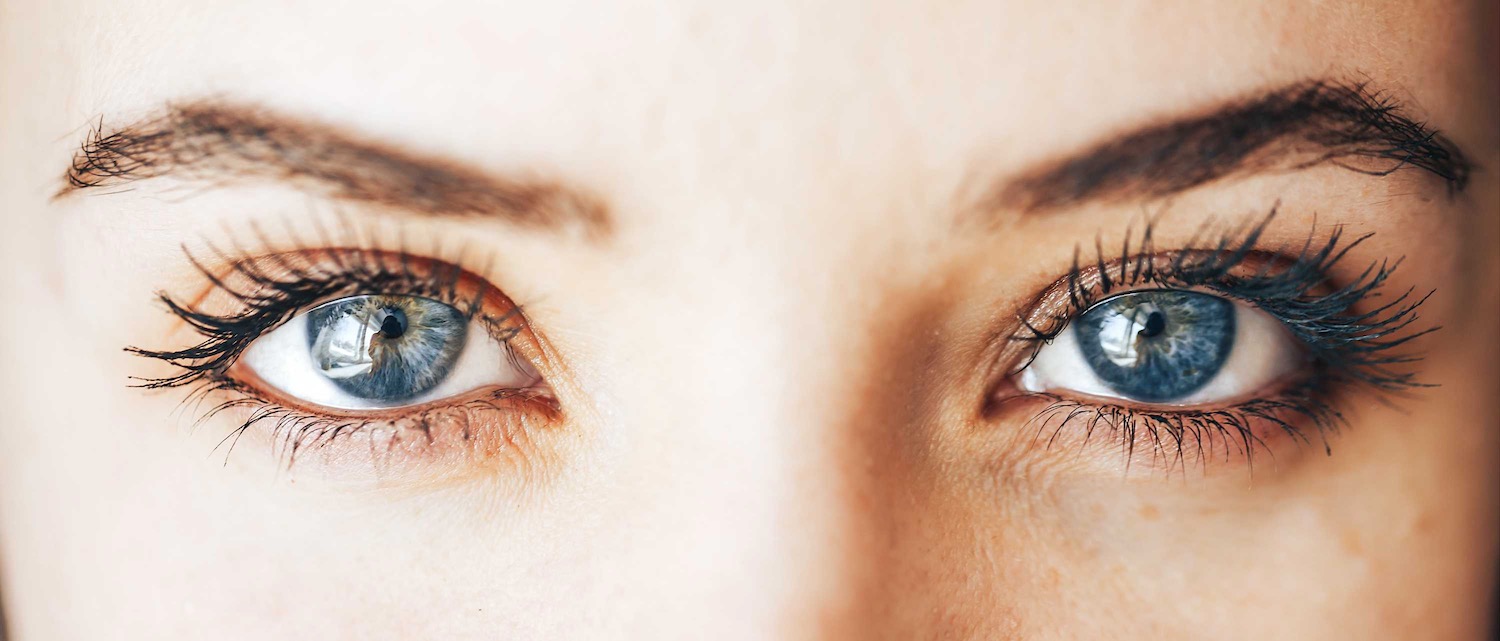
How Many Botox Units for Eyes?
The area around the eyes is one of the most popular for which patients seek out Botox treatments. Probably due to the fact that one’s age is reflected most in the lines and puffiness around the eye area.
But just how many Botox units are required to treat the eyes? The answer to that question depends largely on the area around the eyes that is being treated. Generally speaking, about 15-25 Botox units are needed to treat crow’s feet. Forehead lines, meanwhile, require about 10-20 Botox units. And lastly, frown lines – in the center of the forehead – need about 5-10 Botox units.
Most people need at least 10 units of Botox to achieve their desired results for the eyes. However, it’s important to remember that everyone is different. Your doctor is best to advise you on the appropriate amount of Botox units for you.
The number of units of Botox needed to treat under-eye bags is typically based on the severity of puffiness you are experiencing. For example, if your under-eye bags are mild, then you can expect to receive about 20 units per eye; however, if your under-eye bags are severe, you may need up to 40 units per eye. Most people require between three and five treatment sessions for this type of Botox treatment.
Treating crow’s feet through the injection of Botox into the forehead muscles – also known as a brow life – should be done using a 1:2 milligrams/unit ratio distributed equally in five injection points around each eye area (the brow lift will involve 15-30 injections). To treat crow’s feet through suborbicularis oculi injections, 1:2 milligrams/unit is injected into three injection points. For treatment of periorbital dark circles, as much as 5 milligrams may be used in a single session.
When used correctly, Botox can be one of the best defenses against the tell-tale signs of aging that take the form of lines and wrinkles around a person’s eyes. Therefore, it is imperative that your doctor properly assess your personal situation before prescribing an exact number units of Botox for treating the eye area. Doing so will help ensure the best results possible.
What to Expect with Eye Botox
Many people are fearful about getting Botox injections because they think of the procedure as painful and quite scary. However, the treatment is actually quite simple.
After receiving a local anesthetic to numb your skin, your doctor will use a very fine needle to inject tiny amounts of natural protein into specific areas in order to temporarily paralyze the muscles that cause wrinkles and lines on your face.
The process takes just minutes, and you can usually continue with moderate activities right after the procedure with little or no downtime at all. During the injection process, you can expect to feel some pain or discomfort, but most people find that this pain is tolerable. Lidocaine gel may be applied before giving an injection to help numb up the area around the eye.
Botox injections for the eyes are considered safe and effective treatments; however, as with any medical procedure, there is always a risk for side effects. Some people may experience dryness or irritation in their eyes after getting an injection. Others may develop temporary blurred vision. In rare cases, Botox injections for the eyes may cause more serious complications like vision loss, double vision, droopy eyelids, or severe eye infections.
Other possible side effects may include pain or discomfort during injections, unwanted changes in eyelash height or thickness, dry eyes due to Botox paralyzing the eye muscles, and a temporary decrease in your ability to sweat.
Following a Botox treatment, you can also expect to experience some redness, bruising, and mild swelling. These side effects should subside within three days of getting a treatment. If desired, you can use makeup to cover up any residual bruising, but apply any coverup creams or powders with caution as too much pressure on the treatment area can cause more bruising.
There is a recovery time of about two weeks needed after getting Botox injections for the eyes. During this time, you should avoid rubbing or massaging the treated area. You should also avoid strenuous activities, such as exercising or certain types of work. If you do experience any flu-like symptoms after getting an injection, such as a fever, nausea, or muscle aches, contact your doctor immediately.
In summary, generally speaking, most people need about 10 units of Botox to achieve their desired results for the eyes and it is a safe and effective treatment. The most common side effects are bruising around the injection site, temporary drooping of facial features, which typically lasts for two days, pain or discomfort during injections, unwanted changes in eyelash height or thickness, dry eyes due to Botox paralyzing the eye muscles, and a temporary decrease in your ability to sweat.
Botox injections for the eyes are a safe and effective way to reduce wrinkles and lines, and most people experience minimal side effects. If you’re interested in trying this treatment, consult with a qualified doctor to find out if it’s right for you. You may be surprised at how natural and youthful you look after just a few treatments!

How Long Does Botox Bruising Last?
It’s no secret that Botox can do more than just temporarily reduce wrinkles on your forehead. It has also been shown to have a wide range of other benefits, including reducing excessive sweating and making you look younger. One of the most common side effects after getting Botox injections is bruising. How long does Botox bruising last? This article poses that question and provides some answers.
It’s important to understand that this bruising may vary in colors depending on how much blood is being broken down during the healing process. For example, it’s not uncommon for the bruising after Botox to be red in color. This typically lasts between a few days and a week.
As far as what causes this bruising, it can vary from person to person. This is because everyone has a different amount of blood in their bodies, which means they’ll experience side effects related to Botox injections at varying levels. Generally, however, the main cause of bruising after Botox can be attributed to the needle used for the procedure, which can puncture blood vessels and therefore tear them.
Bruising and Other Post-Botox Side Effects
Botox is a neurotoxin that is derived from the bacterium Clostridium botulinum. When it is injected into a muscle, it blocks the release of acetylcholine, a neurotransmitter that controls muscle contraction. This results in a temporary reduction in the appearance of wrinkles.
One of the most common side effects of Botox injections is bruising. This can occur anywhere on your body where the injection was administered, but it is most likely to happen around the eyes and mouth. Bruising usually disappears within a week or two, but it can last longer in some cases.
There is not too much a patient can do to prevent bruising and other side effects after having a Botox procedure. The following side effects are very possible after undergoing treatment with Botox:
- Droopy eyelids
- Soreness
- Stiffness
- Swelling
- Headache
Because there isn’t much that can be done to prevent these other side effects either – besides using a numbing cream beforehand (which will also minimize bruising) – there aren’t many things people can do to minimize bruising after Botox.
One thing that some patients have found helpful in decreasing the appearance of bruises is applying ice packs to the injection site for fifteen minutes at a time. It’s also important to avoid any strenuous activity, like working out and other forms of exercise, after getting Botox injections. This is because increasing your heart rate can cause more blood to flow to the area, which will make the bruising worse.
It is usually recommended that you avoid taking aspirin or ibuprofen for a few days after getting Botox injections. This is because both of these medications thin your blood and can make the bruising worse.
The Recovery Process
Botox injections are considered a minimally invasive procedure. This means that there is minimal downtime associated with the recovery process. Most people feel fine and can return to their everyday activities immediately after having Botox injections.
There are several things, however, that you can do to minimize bruising after Botox injections. Apply ice to the area for twenty minutes at a time, four to five times per day. You should also avoid blood thinners, such as ibuprofen or aspirin, for two weeks before getting Botox injections and for two weeks afterwards. However, these precautions won’t prevent all cases of bruising.
The recovery process after receiving Botox injections typically takes about 24 hours. Immediately after the injection, you might experience some mild discomfort or swelling that lasts for several hours. Most patients can return to their regular routine right away while others have soreness that lasts a little longer. Bruising usually starts around three days after treatment and can last up to one week in certain people, especially if they take blood thinners.
When Will Bruising Disappear?
After receiving Botox injections, most people experience bruises that appear darker than usual at first. These bruises will then fade into normal looking discoloration over the course of four to five days.
If you’re wondering when your bruising will fade completely after Botox injections, it could take up to two weeks for your bruises to disappear because everyone’s bodies heal differently and at different rates. Because there aren’t many things one can do to minimize bruising after Botox, it’s important to be patient during your recovery process.
Bruising is an expected side effect of Botox injections and it will clear up on its own over time. It’s also important not to get another set of injections done until the bruises have disappeared completely because getting more injections before they are healed will just prolong your recovery time.
After having Botox injections, most people experience dark discolorations that appear after their injection sites swell slightly. These bruises can take up to two weeks to disappear completely but will fade into normal looking skin tone over this time period.
To decrease the appearance of bruising while you recover, try applying ice packs for minutes at a time or avoiding strenuous physical activity. Bruising is an expected side effect of Botox injections and will go away on its own over time, so be patient and take the necessary precautions during your recovery.
Finally, bruising after Botox injections usually lasts one to two weeks, but it can last longer in some cases. There are several things you can do to minimize bruising, such as applying ice and avoiding blood thinners. The recovery process typically takes 24 hours and most people can return to their regular routine right away. However, some patients may experience soreness that lasts a little longer.

How Long Does a Botox Brow Lift Last?
Choosing to have Botox injections for a brow lift is a great option for those who want to look younger and refreshed without the hassle of surgery or other invasive procedures. Prepare yourself to say goodbye to those pesky forehead wrinkles, crow’s feet, and eye bags.
The procedure involves injections around the eyebrows, which smooths out any lines you may have. You will feel painless pressure as the technician aids in injecting your face with a few milliliters of the Botox solution.
The treatment is done in just a few minutes, however your results can last up to three to four months. It is commonly recommended to get the brows lifted every 3-4 months depending on how many lines you have and how fast they appear.
Botox Brow-Lift Procedure
Are you looking for answers to the following questions: Why does my face hurt? Why do I look so tired? Why don’t people compliment me on my appearance anymore? There might be a solution for that.
Botox has become one of the most common anti-aging treatments around due to its positive effects on facial muscles which decrease with age. A popular noninvasive treatment option is the Botox brow lift, which is used to smooth out the forehead and eye area.
Everyone experiences the aging process differently; some see visible age spots, drooping skin, sun damage, and puffiness under eyes, while others won’t notice any difference until they start losing their vision or begin suffering from arthritis pains.
A Botox brow lift is a quick and easy way to reduce the appearance of some of these problems and give you a more youthful look. It is also a great option for those who want to look younger and refreshed without the hassle of surgery or other invasive procedures.
The brow lift procedure using Botox can be performed in about 15 minutes, but you must plan ahead as there is usually a pre-op appointment required. The day of the procedure, you will likely have to go into the office at least an hour before your scheduled time so that they can put numbing cream on your forehead and then mark up where they should do the injection.
You may feel some discomfort during the injection but afterwards there should be little or no pain. You will then receive a type of paste that you need to apply on the area where you received the injection. This paste is designed specifically for Botox brow lifts and helps with swelling as well as bruising which can happen around your eyes.
Because some bleeding or bruising is likely following the short procedure, it is recommended to take the entire day off to relax afterwards. On average, most people experience some results within 24 hours, and by 72 hours there should be a clear sign that the Botox has taken effect.
Botox Brow Lift Aftercare
You can resume normal activities after just a few days after having a Botox brow lift procedure, but it is recommended that no strenuous exercise or excessive heat exposure occurs for at least three days. After that recovery time, you may use makeup to cover up any residual bruising and swelling, although in most cases people only see some slight redness, which usually fades within two weeks.
Some other benefits of Botox brow lift include:
- Reduces appearance of wrinkles and lines
- Gives a more youthful appearance
- Is a noninvasive and quick procedure
- Lasts up to 3-4 months
- Requires little, if any, downtime or recovery time
The most common side effect from the procedure is bruising and swelling, which can happen in almost anyone. The good thing is that this usually goes away after about two weeks.
Overall, a Botox brow lift is a quick, easy, and minimally invasive way to achieve a more youthful appearance. Most people notice results within 24 hours of the treatment and the effects typically last for three to four months. If you are looking for a long-lasting solution to forehead wrinkles, then a Botox brow lift may be the perfect option for you.

What Lasts Longer: Botox or Dysport?
While Botox and Dysport are both used as weapons in the never-ending battle against wrinkles, there remain differences in the way each treatment works. For example, Both methods are powerful anti-wrinkle fighters, but which one lasts longer?
This article examines some of the basics of both treatments such as what lasts longer, Botox or Dysport and what youth-seekers should expect from both methods.
Botox is injected into specific muscles to stop them from creating the expression that causes wrinkles. Dysport, on the other hand, is injected into a wider area of muscles to relax them. The result is a smoother skin that lasts longer – up to a year with a single treatment.
Everyone worries about wrinkles as they age. Unfortunately, as we grow older, the muscles in our face begin to look fatigued and worn as fine lines form. We all know that Botox is a trendy way to help reduce the appearance of these lines. Fewer people know how Dysport works or why it can help with their anti-aging goals.
Botox vs. Dysport
Botox is an injectable drug that relaxes the muscles in the face to reduce wrinkles by paralyzing them. It has been used by millions worldwide for years now because it is a safe and effective way to smooth out those stubborn wrinkles.
When injected directly into specific muscles where wrinkles appear, Botox effectively “turns off” those facial expressions so that you can enjoy long-lasting results for up to a year with a single treatment.
On average, Botox injections last for about three to four months. That means you can go up to six months without having another injection if you don’t want too many lines on your forehead or around your eyes.
There are some drawbacks to Botox, especially when it comes to cost. It costs anywhere from $300-$600 per treatment depending on where you live and how much product is used during the procedure. And because it only lasts for a few months, you’ll have to get injections every four to six months to maintain the anti-wrinkle benefits.
Also, it takes about 10 days for Botox to take full effect, but you may notice smoother skin right away.
Like Botox, Dysport is also an injectable drug, but it works differently. Dysport is a neurotoxin that relaxes the muscles in your face, but it also temporarily freezes them. This means that the results of Dysport treatments last longer than Botox injections because the muscles are paralyzed for a longer period of time.
Dysport treatments usually last for about three to four months as well, but they cost less than Botox injections. You can usually find Dysport treatments for around $200-$300 per treatment. And like Botox, you’ll need to get treatments every four to six months for anti-aging benefits.
The cost and length of treatments means that both Botox and Dysport injections are effective ways to prevent wrinkles, but most people choose between these two options based on where they live.
Some doctors only use one drug over the other, so if you want to get an injection in your forehead or crow’s feet you might have to go through a few different procedures with different doctors.
There are some who say that they like the idea of not having any downtime after getting their injections done with Dysport whereas others prefer the instant gratification of seeing results from Botox right away.
Ultimately both products have pros and cons so it all comes down to what works best for you.
